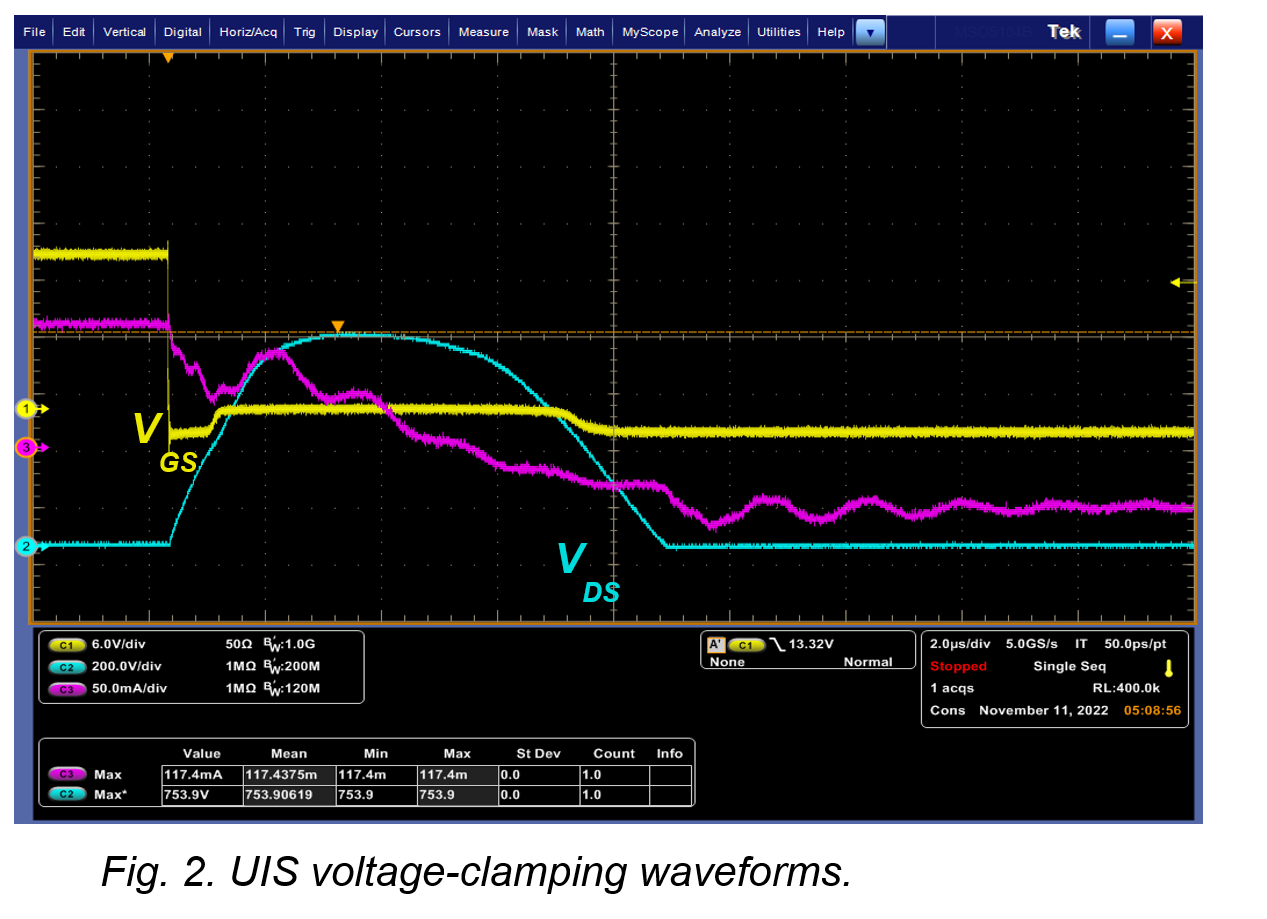LIBRARY
Avalanche Capability in GaN Vertical PN Diode with Simple Edge Termination

In this work, GaN diodes with floating guard rings that can effectively manage the electric field at the edge are first investigated by technology computer-aided design (TCAD) simulation. The guard ring number, spacing, and implantation depth have been optimized. Fig. 1(a) shows the top and cross-section views of a GaN device with four guard rings. The gray area shown in Fig. 1(a) is created by implanting deep donor-level defects (nitrogen vacancy) into the p+ region.
After the device fabrication, static characterizations are first conducted. A positive temperature coefficient of breakdown voltage has been demonstrated, which is strong evidence for the avalanche capability of guard ring devices. An on-wafer UIS test is then conducted to validate the avalanche robustness under switching conditions. Fig. 1(b) shows the on-wafer UIS test setup. Multiple devices are tested, with some guard ring designs enabling the strong avalanche capability. Fig. 2 shows a guard ring device with voltage-clamping and resistive-energy dissipation, proving the avalanche capability

This work demonstrates a simple and effective edge termination to enable the avalanche in GaN devices; this approach shows good promise for expanding GaN's applicability in power electronics.






















































































